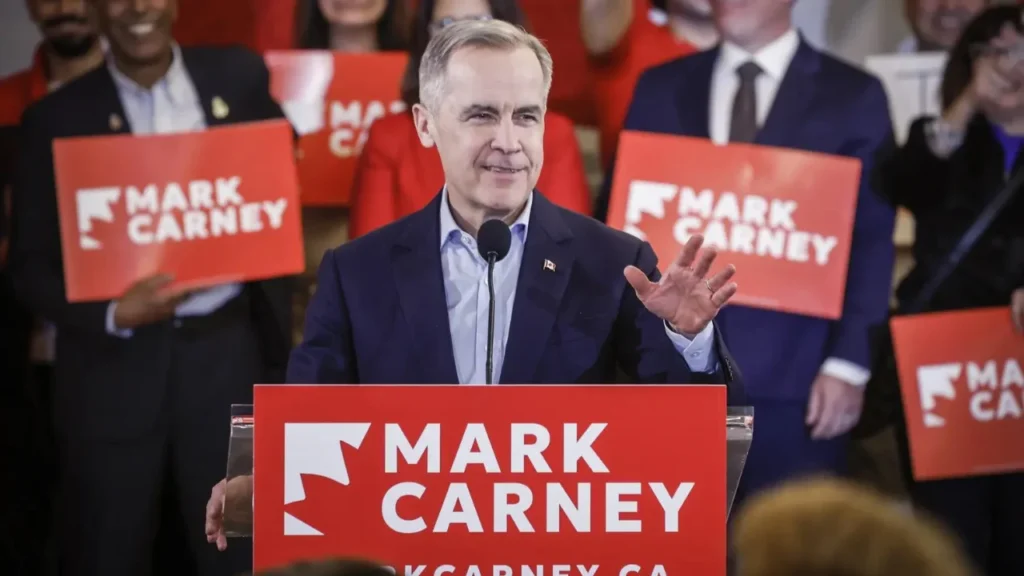Poilievre Pledges TFSA Top-Up to Boost Canadian Investment
Conservative Leader Pierre Poilievre has unveiled a plan to enhance Canada’s Tax-Free Savings Account (TFSA) framework, aiming to direct more private investment into domestic companies. The proposal, which would allow Canadians to contribute an additional $5,000 annually to their TFSAs for investments in Canadian businesses, is positioned as a strategy to drive job creation and strengthen the national economy. If implemented, this measure could significantly increase the capital flowing into Canadian industries, providing businesses with the financial resources needed to expand and innovate.
Current TFSA Contribution Limits and Proposed Changes
As of 2025, the federal government permits Canadians to contribute $7,000 per year to their TFSAs. This program, first introduced in 2009, has undergone various adjustments, with total contribution room for long-term account holders now reaching $102,000. Under Poilievre’s proposed changes, individuals would see an increase in their allowable savings, provided the funds are allocated to investments that support Canadian companies and economic growth.
Supporters of the plan argue that the additional $5,000 contribution allowance would help small and medium-sized enterprises (SMEs) by providing a steady influx of private capital from individual investors. In contrast, critics worry that the policy may primarily benefit high-income Canadians who already have the financial means to maximize their TFSA contributions.
Economic Rationale and Trade Considerations
The initiative is being framed as a means to fortify the economy against external pressures, including trade disruptions stemming from U.S. policies. Poilievre suggests that by incentivizing domestic investment, the country can reduce reliance on foreign markets and mitigate the impact of tariffs, such as the recently imposed auto tariffs by the U.S. administration.
“Encouraging Canadians to invest in local enterprises will not only fuel innovation and job creation but also contribute to a more self-sustaining economy,” Poilievre stated in a recent address. He emphasized that this measure could counteract financial instability caused by international trade disputes, positioning Canada for greater economic independence.
Economists remain divided on the overall impact of the policy. Some argue that incentivizing investments in Canadian companies could stabilize key industries such as manufacturing, technology, and energy, which have faced challenges due to global market fluctuations. Others believe that without strict regulations, the measure could be exploited by high-net-worth individuals who would benefit more from the tax advantages than from the intended economic stimulus.
Comparing Party Policies on Economic Growth
The TFSA top-up proposal emerges as economic concerns continue to dominate the election landscape. Recent polling suggests that the cost of living remains the top issue for voters, prompting all major political parties to introduce financial relief measures.

Liberal Leader Mark Carney has pledged a 1% tax reduction on the lowest federal income bracket, promising that a dual-income household could save up to $825 annually. Meanwhile, NDP Leader Jagmeet Singh has proposed adjustments to Employment Insurance and an increase in the basic personal amount, providing tax relief to those earning below $177,882 per year while raising rates for higher-income earners.
Poilievre has also promised a 15% reduction in income tax on the lowest income tax bracket, lowering it to 12.75%, a move he claims would provide working-class Canadians with more disposable income. These competing policies highlight a significant ideological divide in how each party approaches financial relief and economic stimulation.
Potential Benefits and Drawbacks of the TFSA Top-Up
Benefits:
- Encourages greater private investment in Canadian companies, helping businesses grow and expand.
- Provides individuals with more tax-free investment opportunities, increasing long-term financial security.
- Could serve as a countermeasure to trade-related economic instability, ensuring more financial capital stays within Canada.
- May help retirement planning by allowing Canadians to save more in tax-advantaged accounts.
Concerns:
- Higher-income Canadians may benefit disproportionately, as they are more likely to have excess capital available for investment.
- There is no guarantee that increased investment in Canadian companies will result in higher wages or direct benefits for average workers.
- Some economists worry that this move could further inflate stock and real estate markets, making affordability challenges worse.
Looking Ahead
Poilievre’s TFSA expansion plan has sparked debate over its feasibility and economic impact. While proponents argue that the move could drive capital into Canadian businesses, critics question whether it would disproportionately benefit wealthier investors rather than providing broad financial relief.
As the election campaign progresses, voters will weigh these competing economic policies to determine which party offers the most effective strategy for financial security and national prosperity. The ultimate question remains: will Poilievre’s TFSA top-up boost the middle class or merely reinforce existing financial advantages for high-income Canadians? Only time will tell, but as the campaign heats up, economic policy will remain a defining issue for voters.


